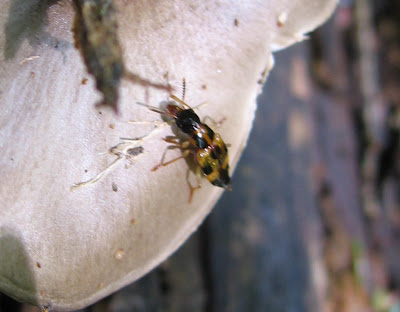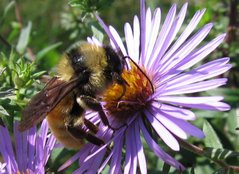

Bolitotherus cornutus
Bat Lake, Algonquin Provincial Park
June 25, 2006
(Found on Shelf Fungus, Fomitopsis pinicola)
The Forked Fungus Beetle is a member of the Superfamily Tenebrionoidea, family Zopheridae (Ironclad Beetles). The Tenebrionidae are referred to as "darkling beetles" because most of the are black or brown. Stephen Marshall (Insects: Their Natural History and Diversity, Firefly, 2006) says of this species that they "stay close to hard shelf fungi or bracket fungi, rarely moving between fungi on different trees in the same forest." They are mostly nocturnal and produce a brown stain of defensive chemicals that burn or discolor skin. The pictures above are of a female.








 Entoloma
Entoloma


 Oxyporus quinquemaculatus
Oxyporus quinquemaculatus
 Bolitotherus cornutus
Bolitotherus cornutus